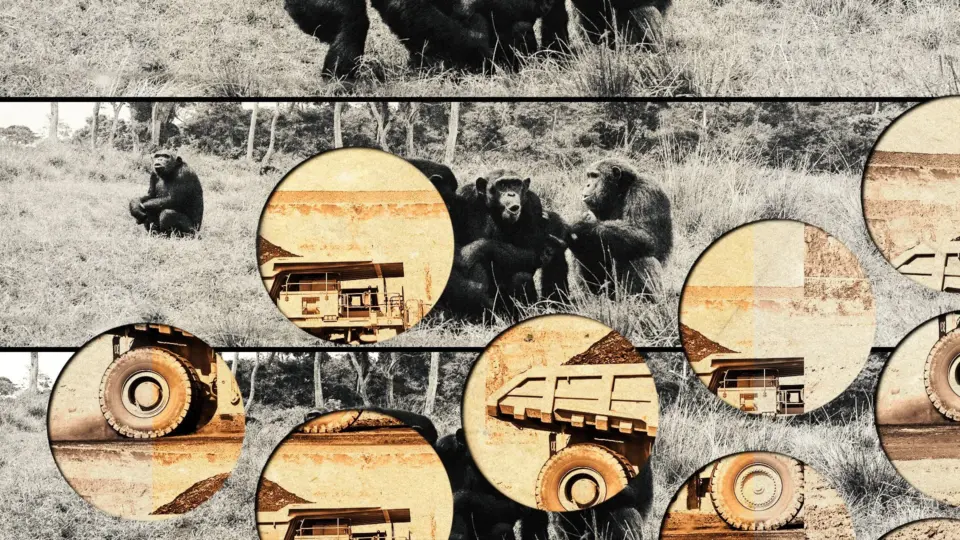The push for critical minerals to support green energy is posing a serious threat to Africa’s great apes, with a recent study revealing that over one-third of these iconic animals are endangered due to mining operations.
Published in Science Advances and led by teams from the German Centre for Integrative Biodiversity Research (iDiv), Martin Luther University Halle-Wittenberg, and conservation group Re:wild, the study estimates that nearly 180,000 gorillas, bonobos, and chimpanzees are at risk.
“Although these minerals are crucial for clean energy transition, their extraction is leading to increased deforestation of the apes’ tropical rainforest habitats,” the researchers noted.
The study also points out that mining companies often keep biodiversity data private, potentially underestimating the true impact on biodiversity and great apes. Moreover, there’s a lack of comprehensive research on mining’s threat to global biodiversity.
By analyzing data from mining sites across 17 African countries, the researchers found significant overlaps between high-density ape areas and mining zones. Particularly in Liberia, Sierra Leone, Mali, and Guinea, the overlap between mining and ape habitats was notable.
Dr. Jessica Junker, the study’s lead author, stressed the importance of transparency in mining operations. She highlighted the need for mining companies to share data to better understand and mitigate their environmental impact.
The study also looked at how mining areas intersect with Critical Habitats, crucial areas for biodiversity. Despite existing regulations, the researchers found considerable overlaps, casting doubt on the effectiveness of mitigation plans to offset mining impacts.
The researchers recommend implementing avoidance measures during the exploration phase, which is currently poorly regulated. Often, baseline data is collected only after significant habitat destruction has occurred, failing to accurately reflect the original ape populations before mining began.
“In West Africa, many mining areas overlap with fragmented ape habitats, often in high-density ape regions. Yet, 97 percent of these mining areas lack ape survey data,” the researchers highlighted, emphasizing the need for better access to environmental data in the mining sector.
Dr. Tenekwetche Sop, manager of the IUCN SSC A.P.E.S. Database at the Senckenberg Museum of Natural History, emphasized the importance of mining companies having mitigation and compensation plans. However, he noted that most lack the necessary species baseline data to inform these actions.
“Encouraging these companies to share their ape survey data with our database is crucial for transparency. Only through collaborative efforts can we truly understand the impact of mining activities on great apes and their habitats,” Dr. Sop concluded.



